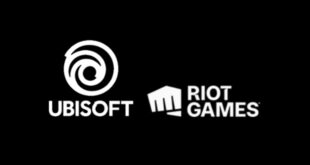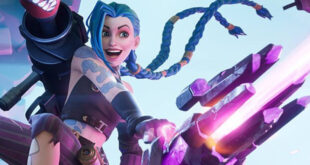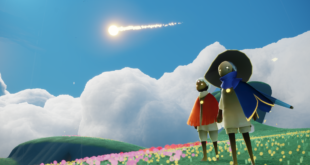Balancing a live online game like League of Legends is tricky. With millions of fervent fans playing on a daily basis, many of whom know the finer details of the game on an intimate level, one wrong patch can (and does) set the community ablaze.
But this shouldn’t stop developers from making changes, says Greg Street, Design Director at Riot Games. It’s a vital part of games like League and one of the reasons Riot even exists.
“When Mark and Brandon started the company, they had been playing a lot of games where they felt like it was solved and everyone knew you’re supposed to play it a certain way,” Street says. “Which was very frustrating, when the game has all this richness that just goes untapped. Because really there’s one way to play and everyone knows what that is, and the developers aren’t stepping in to fix it.
“So, from the very beginning [League of Legends] was a game about constantly stepping in whenever we think there’s a problem. We try not to be too heavy handed, because sometimes the community rallies to the occasion and they can figure out a solution to something. But when we think that isn’t happening we step in and do something about it. I think that helps prevent players from getting too frustrated. They can have some confidence that Riot probably knows that this is a problem and they’re going to do something about it.”
The idea of players balancing the game themselves by finding solutions to ‘problems’ introduced by the developer is a fascinating one. Buffing or nerfing one character might mean they see a huge rise in win-rate, but players can find a way of combatting that, either by out-playing their opponent, or by finding another undiscovered wrinkle in the latest patch which grants them an advantage.
When things get scary though, and one of the game’s 100+ champions starts rampaging across the board, Riot will step in with both a short term and a long term solution.
“The way we do almost anything on League is that we have lots of little teams and each team owns a particular problem space,” Street says. “I talk about the Live Team a lot as like the ‘first responders’, because we have a situation that we need to deal with right now and it can’t wait for a long-term overhaul of a champion. So they’ll do something in the short term and we’ll also have a long-term plan to fix the problem more fundamentally when we have the bandwidth and engineers and artists and all the other pieces that we need to do it right.”
When patching champs, Riot wants to focus on what’s interesting and fun. “We prefer to emphasise strengths,” Street explains. “So if we had to nerf a champion, we’d rather open up their weakness more, rather than taking away what’s cool about them. In terms of player interest, we try to add enough to keep things fresh. That’s really the reason we have new champions. It’s for someone who’s like ‘yeah, I’ve played 1000 games of League, I kind of feel like I’ve seen it all’.”
We spend a lot of effort coming up with goals and visions
Greg Street
New and updated champions are a huge part of keeping League of Legends evolving.
“The nucleus of creating a new champion, or even a champion update, comes with three roles,” says Street. “One is the designer, one is the artist and one is the writer. The DNA of a champion can come from any of those roles. Sometimes a designer would say ‘hey, I’ve always wanted to make a marksman who plays in the jungle’.
“Or the writer might say ‘I came up with this really cool story. Let’s see if there’s a way to turn it into a champion’. The artist can make a mood board where they’ll take, say, a cool character from a comic book and from a movie and put them all together and say ‘imagine a champion who has the mind of a serial killer’. That’s kind of where Jhin came from. Obviously that goes through a ton of iteration and we have a lot of ideas that don’t work out.”
For new characters in League of Legends, mediocrity won’t cut it. Riot only wants the best fictional heroes and villains to take part in their world.
“When you start at Riot, you go through this process called ‘Denewb’ and you learn a lot about what it’s like to work on LoL. We brainstormed new champion ideas and my group came up with a student necromancer. The champion designers who were leading that session said ‘that’s a great start – being a necromancer’. But the way you would make a League champion is not that he’s a student starting out. He’s the best necromancer in the world. Maybe he doesn’t have much experience, but he has huge power. That’s what these champs are about. They need to be larger than life.”
An important part of designing a champion for League of Legends is making them accessible, but also giving them the depth for high level players to really sink their teeth in.
“We look at something we call the skill floor and the skill ceiling,” Street explains. “Which is basically: how much better do you get at the champion over time. Before we changed Warwick, he was the easiest to master champion in League. By the time you’d played five games with Warwick, you were a master.
By contrast, Yasuo is almost limitless. You could play 1000 games as Yasuo and still get better, game after game after game. Ideally we have a low skill floor and a high skill ceiling but we occasionally ship a champion, I’d say Taliyah and Azir were like this, where the skill floor was also really high. You’re just going to lose and lose and lose, until you’ve played 50 games and that’s asking an awful lot of players.”
Champions like these might be hard to get to grips with, but they’re often the most rewarding to play once you’ve learnt their intricacies. Watching a pro player pull off a crazy Azir combo can be a truly aspirational. Which links in with Riot’s philosophy of ‘one game to rule them all’.
“We make it hard on ourselves by using a single set of numbers for everyone,” says Street. “For example, if you look at a game like basketball, they will actually change the distance of the lines, depending on if you’re playing at college level or pro level. We don’t do that, partially because the virtuous cycle of ‘I play League, I watch esports and then I play more League’ is really important to us. We don’t want players to say ‘yeah, SKT did this amazing triple kill, but that’s because they have that we items available can’t buy’.”
Riot Games has a unique culture. By trusting colleagues to work to a shared vision, the devs can have more plates spinning across the studio.
“The thing that works really well with Riot’s company culture is the fact that we spend a lot of effort coming up with goals and visions,” Street says. “Then we give individual teams a lot of autonomy to solve their own problems. That allows us to work without a lot of overhead. Someone like me doesn’t have to spend all their time going from meeting to meeting to approve things. For example, we’ve been making a lot of complicated champions, so we have a goal now that’s ‘let’s make some champions that are a little more straightforward to play, but still have a lot of depth and you can still have a long skill curve’. That works super well for Riot and allows us to have this gigantic dev team and still have a lot of things in production at the same time.”
Another aspect of the culture is their commitment to taking play seriously. Rioters play the game daily, because it’s important that everyone from finance to design understands and enjoys the company’s output. It’s also a great way to see the game from a player’s perspective.?“Playing League at the office is super valuable. We’ll do designer playtests at least twice a day where someone will say ‘hey I have my new champion in, I changed her W. Can you try it and see what you think?’.
“But above that, you’ll see people at Riot just playing League. Just getting on their accounts and having a game. That’s super important. If you have a team that loves their product that much, they’re going to want to do the right thing by it.”

 MCV/DEVELOP News, events, research and jobs from the games industry
MCV/DEVELOP News, events, research and jobs from the games industry



